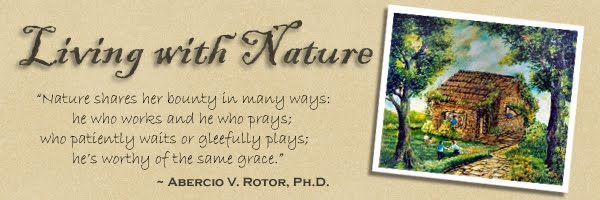Ecological Genocide by Deforestation
Dr Abe V Rotor

Philippine Hawk-Eagle or Lawin (Nisaetus philippensis) an endangered bird
of prey endemic to the Philippines, Parks and Wildlife Nature Center, QC
This is understandable. As an ecosystem, the forest is a product of evolution. Organisms evolve with their natural habitat, acquiring traits in the process. Nature is patient so to speak, to give chance for organisms to acquire the Darwinian fitness, otherwise they will perish. Many have gained dominance in terms of number. Others simply are persistent like the dragonfly that is older than the dinosaur and has remained a popular forest resident. Acquisition of protective or aggressive mimicry is a product of long years of evolution that shows that it is effective adaptation. A classical example is the relationship of fig trees with wasps that pollinate their flowers. Not even water or wind or man can effectively do it. More specific than this is the fact that each kind of fig has a particular wasp pollinator that carries out the job. And each kind of fig has a specific fruiting season, providing continuous supply of food to many animals, such as monkeys and ground fowls.

Tamaraw (Anoa mindorensis),
Museum of Natural History, UPLB Laguna
1. Nature, and not man, determines the species composition and combination in a forest. We may be referring to a woodland - not a forest - when we see Gmelina, Ipil-ipil and Teak plantations. These are intended to produce commercial wood or pulpwood for paper.
2. The landscape and the forest developed together - geographically, geologically, and biologically. Streams and springs are full because trees store rainwater in the ground; the roots and natural vegetative cover check erosion and siltation. Thus the death of a forest means also the death of streams, drying of river, silting of lakes and ponds into swamp, meandering of rivers, etching of gullies on hills and mountainsides, to mention but a few consequences.
3. Abandoned deforested areas continue to lose not only soil fertility; they lose the entire soil structure, beginning with the most fertile topsoil to the clay foundation next to bedrock. In short, through erosion the foothold built for thousands of years could be lost permanently. We can only surmise what kinds of plant grow in such situation. It is not surprising to see wasteland of talahib and cogon grass on former forestlands.
4. The forest creates a mini-climate. Forest attracts clouds. Transpiration enhances precipitation so that rain occurs anytime of the day, hence the name rainforest. All this can be permanently lost with the destruction of the forest. This explains why desertification (formation of desert) starts at deforested areas. Southern Cebu, in spite of its proximity to sea, is a typical example where one can observe the pathetic gnawing process. This can be observed also on the Sierra Madre starting in Bulacan, and on extensive areas along the narrow strip of the Ilocos region. ~




No comments:
Post a Comment